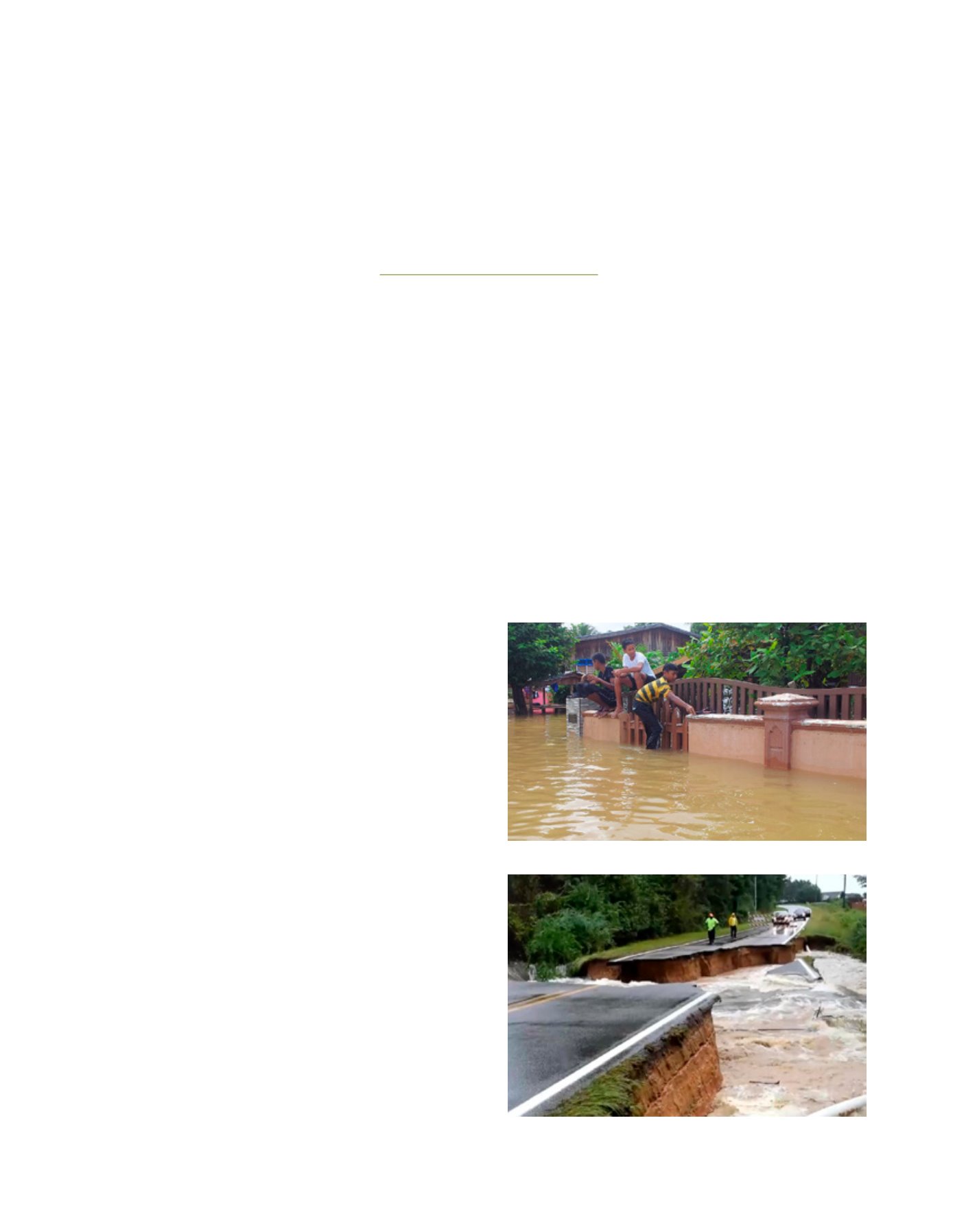

[
] 114
A B
et ter
W
or ld
Water and sanitation during the flood disaster –
a community-driven commitment towards
a better world
Kah Yee Lim, Nor Azazi Zakaria and Keng Yuen Foo, Researchers, River Engineering and Urban Drainage
Research Centre (REDAC), Universiti Sains Malaysia (USM), Malaysia
F
or several decades, floods have been among the most
frequent and destructive natural catastrophes, attract-
ing worldwide attention. In 2004, the worst flood
devastated more than a dozen countries throughout the Indian
Ocean region, affecting nearly 700,000 people, with 400,000
reported dead or missing, and more than half of the survivors
left homeless by the enormous walls of water. The 1931 flood
in China was the most disastrous, killing 3,700,000 victims.
The deadliest floods in more than 90 countries over the past
60 years have affected nearly 1 billion victims.
One of the most severe problems during a flood is the deteri-
oration of water quality caused by the influence of domestic,
agricultural and industrial activities, which contain a variety
of heavy metals, chlorides, nitrites, nitrates and sulphate
ions. The complete submergence of sewerage systems, septic
tanks and sanitary facilities, further pollutes surface water,
to become a reservoir for microorganisms such as
Escherichia
coli
,
Salmonella typhimurium
,
Shigella flexneri
,
Campylobacter
jejuni
,
Enterococci spp.
and protozoa.
In low-lying areas, flood water can flow from the flood-
plain into local rivers, and then becomes the main source of
domestic water. Statistical data is available to suggest that
over 80% of water borne diseases – diarrhoea, dysentery,
anaemia, cholera, shigellosis, campylobacteriosis, amebiasis,
giardiasis, cryptosporidiosis, norovirus, typhoid, para-
typhoid fever, leptospirosis, and hepatitis A – are caused
mainly by consumption of water from poor supply systems,
as well as poor hygiene and sanitation levels.
Malaysia, located in the wet and humid tropics, in lands
extending 10 degrees north and south of the equator, with a
fair amount of sunshine, a hot climate coupled with an average
temperature of 25ºC, and a high rainfall rate of 2,000 mm
well distributed throughout the year, has undergone the same
occurrence for the past 50 years. The worst 2014 flood event,
affecting nearly 30,000 km
2
(9% of the country’s total land
mass) devastated the east coast states of Kelantan, Terengganu,
and Pahang, with 200,000 victims, infrastructure damage at
RM 9.24 billion, 24 reported deaths, and 8 people still missing.
In excess of US$ 28 million was spent on re-stabilising the
hill slopes, while US$ 100,000 was allocated for the alle-
viation of suffering of the flood victims. Approximately
US$ 83,000 and 10,000 of blankets were delivered by the
International Federation of Red Cross and Red Crescent
Societies (IFRC) to 5,000 families for a period of one month,
as part of the overall operation. This tragedy imposed multi-
farious constraints on the socio-economical structure and
sustainable development of the local community. The relief
and recovery expenditure has had significant repercussions
to the national debt, with negative short-and long-term
implications for overall economical performance.
The worst 2014 flood event in Kelantan, Malaysia
The destruction of the East-West Highway during the 2014 flood tragedy
Image: USM
Image: USM
















